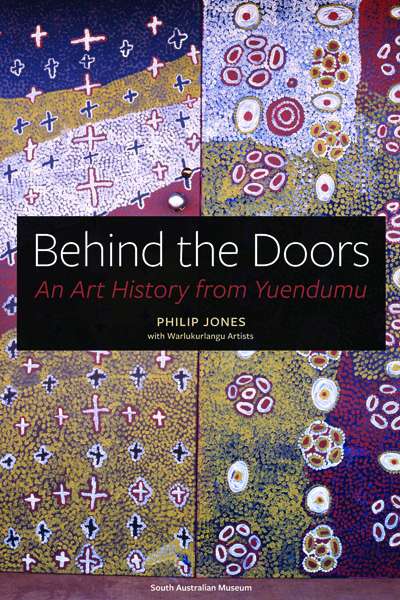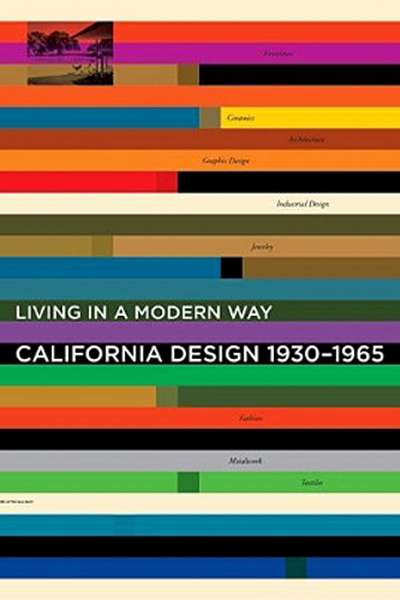Visual Arts
Behind the Doors: An art history from Yuendumu by Philip Jones with Warlukurlangu Artists
The painting of the Yuendumu doors in 1984 by Warlpiri artists, whose country is north-west of Alice Springs, represented an extraordinary moment in Australian art and modern art generally. In the 1980s some Aboriginal elders painted the doors in the Yuendumu School building to prompt students to show respect for their school and as a marker of their culture. It was the first time that they had painted using acrylics (not ochres), in colours never before used, to record the major stories of their community.
... (read more)For Auld Lang Syne: Images of Scottish Australia from First Fleet to Federation | Art Gallery of Ballarat
I have been looking at the world through tartan frames recently, thanks to the current exhibition ‘For Auld Lang Syne: Images of Scottish Australia from First Fleet to Federation’ and its accompanying catalogue ($75 hb, 335 pp). Actually, to call it a catalogue doesn’t do it justice; its 335 pages ransack dozens of different angles of the Caledonian experience, with essays by its curators,Alison Inglis and Patricia Tryon Macdonald, the Art Gallery of Ballarat’s director Gordon Morrison, and a dozen others.
... (read more)Breakfast with Lucian: A portrait of the artist by Geordie Greig
He painted Kate Moss naked. The Kray twins threatened to cut off his painting hand over bad gambling debts. He was officially recognised as father to fourteen children by numerous partners, but the unofficial tally could be as high as forty (three were born to different mothers within a few months). He is Lucian Freud, grandson of Sigmund Freud, born in Berlin on 8 December 1922. All of his gambling disasters came from using his ‘lucky’ birth number, eight. Fittingly, he died at the age of eighty-eight in 2011.
... (read more)The Rijksmuseum used to be the dullest of the major European collections. It looked as though Ursula Hoff had painted all the pictures. An air of dowdiness hung over the massive building and crowded collections where the good and the great indiscriminately mixed in with the mediocre in warren-like galleries with an over-supply of the decorative arts.
...The Rijksmuseum used to be the dullest of the major European collections. It looked as though Ursula Hoff had painted all the pictures. An air of dowdiness hung over the massive building and crowded collections where the good and the great indiscriminately mixed in with the mediocre in warren-like galleries with an over-supply of the decorative arts.
After y ...
‘There’s no time like NOW!’ proclaim the signs.
Inspired by the fond reminiscences of slow tram rides of several Melbourne personalities, whose brief anecdotes are interspersed between the pages of the sumptuous Melbourne Now catalogue (Melbourne Now Limited Edition, National Gallery of Victoria, $100 hb, 280 pp, 978072 ...
‘There’s no time like NOW!’ proclaim the signs.
Inspired by the fond reminiscences of slow tram rides of several Melbourne personalities, whose brief anecdotes are interspersed between the pages of the sumptuous Melbourne Now catalogue (Melbourne Now Limited Edition, National Gallery of Victoria, $100 hb, 280 pp, 978072 ...
Living in a Modern Way: California Design 1930–1965 edited by Wendy Kaplan
Living in a Modern Way:California Design 1930–1965 is the catalogue accompanying an exhibition of the same name at the Los Angeles County Museum of Art in 2011–12. The exhibition is now showing at Queensland’s Gallery of Modern Art, after a stint in Seoul.
With its stylish dust jacket, based on a 1956 reco ...
Ninety years after ‘An Exhibition of Australian Art’ was held at Burlington House, London, home of the Royal Academy of Arts, the exhibition Australia opened on 21 September 2013. Touted as the biggest exhibition of Australian art to be staged in the United Kingdom, it is an ambitious undertaking – nothing less than a survey exhibition encapsulati ...
Ninety years after ‘An Exhibition of Australian Art’ was held at Burlington House, London, home of the Royal Academy of Arts, the exhibition Australia opened on 21 September 2013. Touted as the biggest exhibition of Australian art to be staged in the United Kingdom, it is an ambitious undertaking – nothing less than a survey exhibition encapsulati ...




